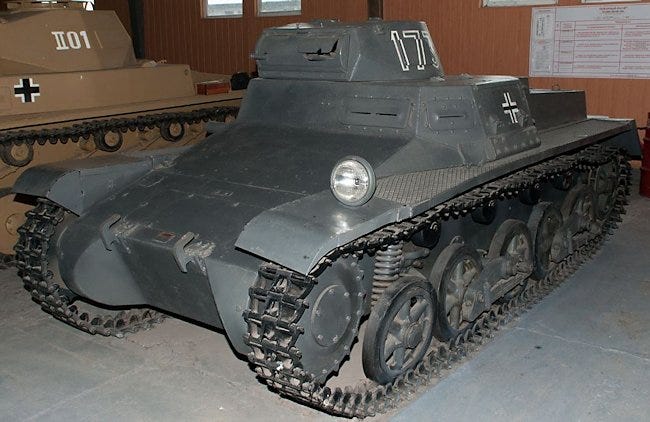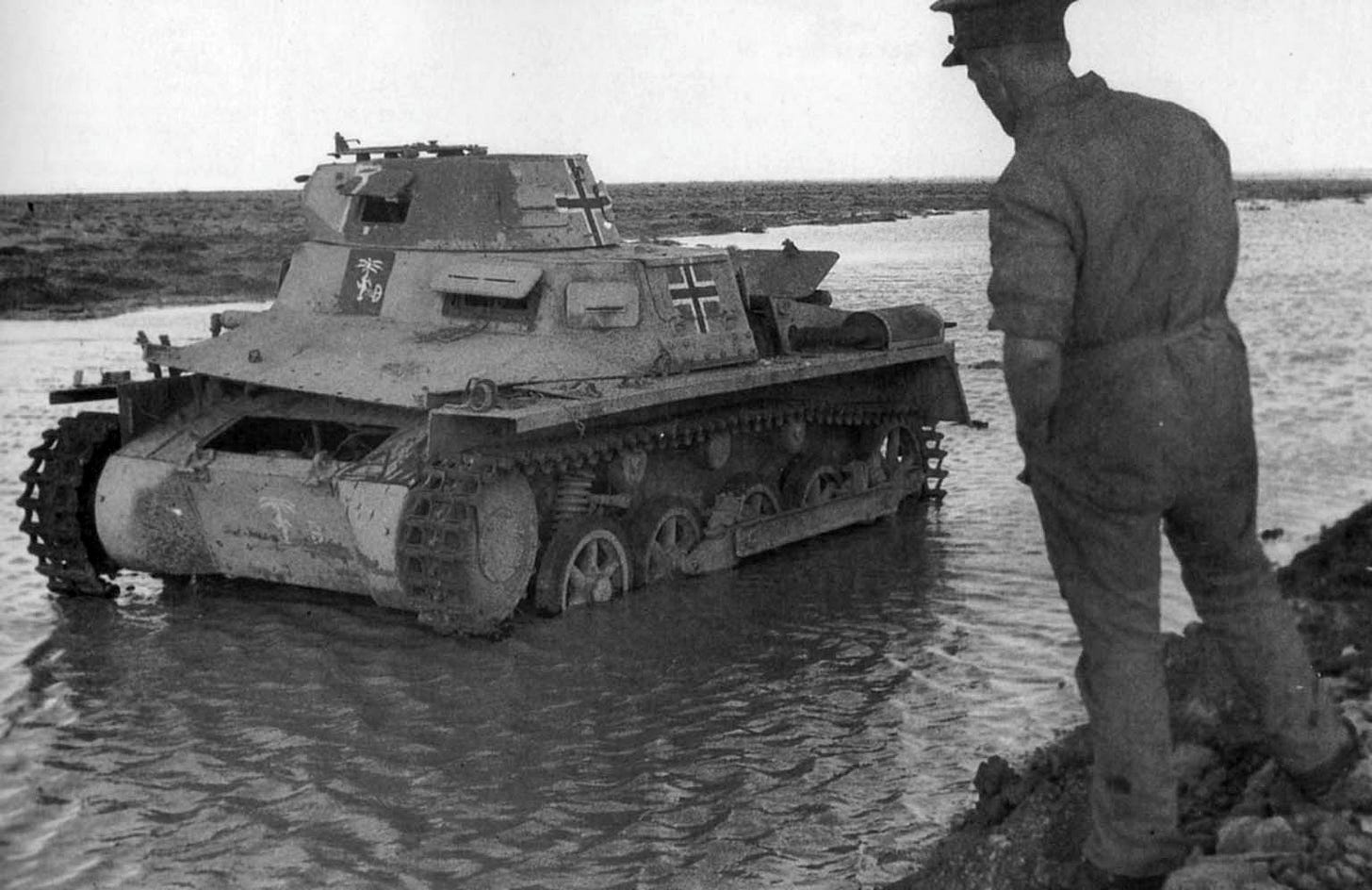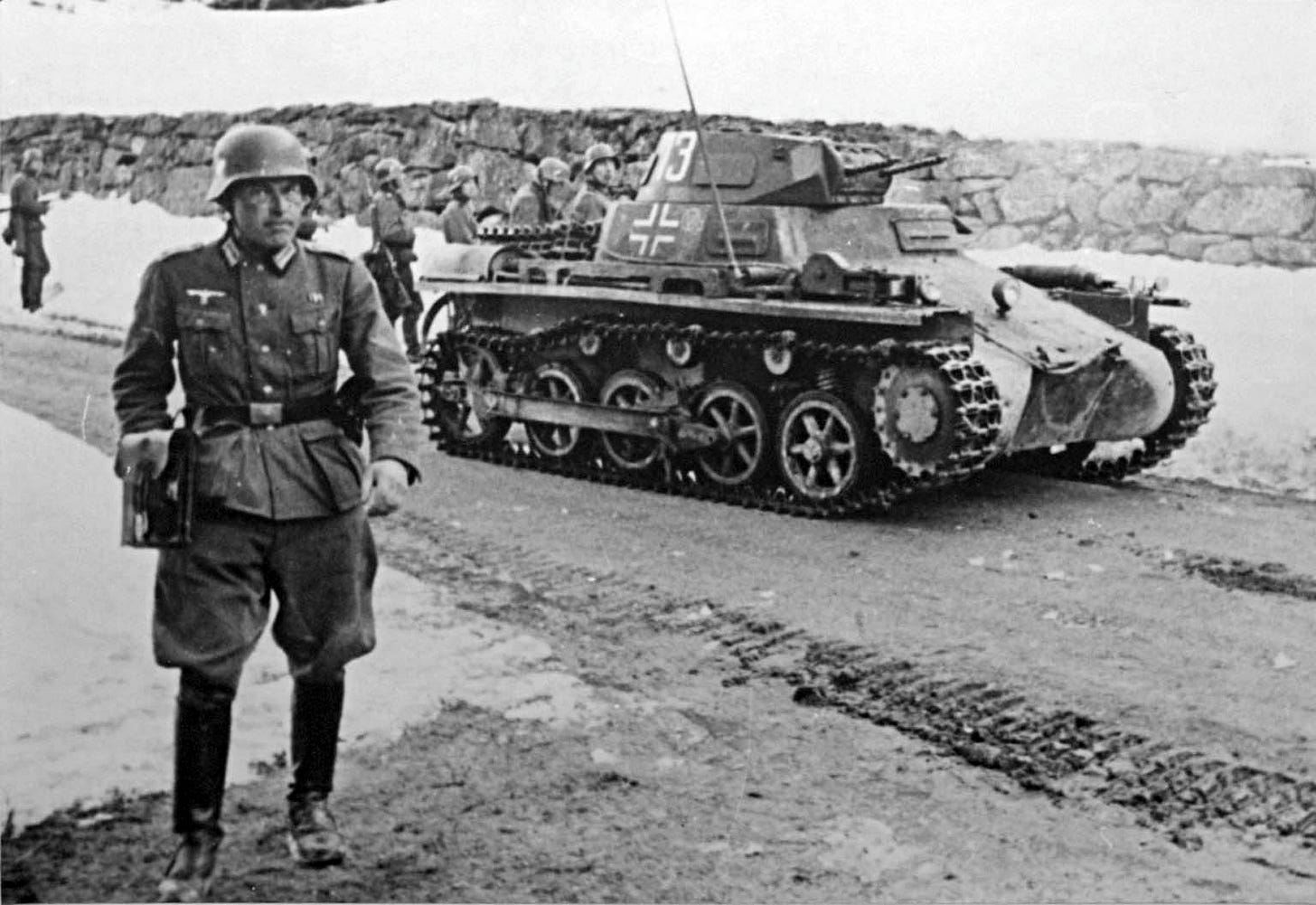Panzer I: A Modest Beginning to a Mighty Legacy
The Panzer I was Germany's first and worst tank during WWII. It began as a stopgap used by German troops during the later development of the Panzer III and Panzer IV and was originally not meant for combat. However, the slow growth of tanks that were better suited for combat led to the use of the Panzer I. This led to a tank with negligible armor and no anti-tank capabilities being on the front lines during the early portion of the Blitzkrieg.
The development of the Panzer I began in 1930 when Krupp was designated to design a light tank based on the light tractor acquired from Vickers Armstrong. This led to the Kleintraktor, which had several failed prototypes and was very similar to what would eventually become the Panzer I. Germany’s government produced vehicles by contracting out different companies to create various parts of vehicles. Ultimately, Krupp was chosen to deliver the hulls, and Daimler-Benz was selected to make the superstructure and turret. All versions of the Panzer I were armed with 2 Mg 13 machine guns, which proved ineffective in any form of tank v. tank combat. The German Weapons Ordnance Department placed an initial order of 200 vehicles for training purposes in 1933, with a deadline of 1935. This initial design was the Panzer I Ausf. A, which had an underpowered engine and was prone to overheating. One thousand of these were eventually ordered to be delivered by the summer of 1935 so that the army could have usable tanks during the development of the Panzer II, which was still in its early stages. Due to the engine issues with the Panzer I Ausf. A, a contract was put out for a better engine and Maybach won the contract with a water-cooled I-6 engine. This would lead to the Panzer I Ausf. B, the improved Panzer I that had enough engine power for most situations. Eventually, 1,190 Panzer I A’s and 399 Panzer I B’s were produced.
The Panzer I saw action on numerous fronts during the war. Its combat debut was in the Spanish Civil War, where the Germans supplied it to the Rebel side. Primarily used as an infantry support vehicle, its armament proved ineffective against Soviet-supplied T-26 tanks. In 1939, during the invasion of Poland, Panzer Is comprised 40% of the German armor. Of the 973 deployed, 320 were lost. Despite facing little Polish armor, the Panzer I encountered effective resistance from Polish tanks like the TKS 20 and the 7TP. Before the invasion of France in early 1940, Panzer Is were deployed in Denmark and Norway, where they encountered no opposing tanks and performed well. However, during the invasion of France, they struggled against well-armored French tanks, contributing to their poor performance. The invasion's success was mainly due to Blitzkrieg tactics and communication failures on the French side. Subsequently, the Panzer I saw limited action in the invasions of smaller European nations and with the Afrika Korps, where it faced challenges due to heat. Its final significant deployment was in Operation Barbarossa, revealing its obsolescence and leading to its relegation to training and garrison duties.
Overall, the Panzer I was a crucial transitional vehicle in the evolution of German tank warfare. Initially intended as a training platform and never designed for prolonged combat, it nevertheless played a significant role in early Blitzkrieg tactics during the invasions of Poland and France. Beyond its operational limitations, the Panzer I served as a stepping stone for the development of more advanced tank designs in Germany. Its lessons in crew training and combat experience were instrumental in shaping future German armored tactics. Moreover, the Panzer I's shortcomings highlighted the need for more heavily armed and armored tanks, paving the way for innovations seen in later German tank models. In this regard, the Panzer I’s historical legacy extends beyond its battlefield performance, influencing the course of armored warfare and military strategy.






